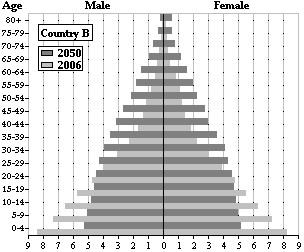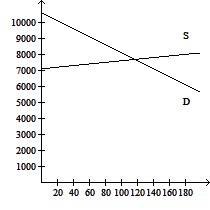In the list of terms, identify the numerical coefficient of each term in the order given and determine whether the terms are like or unlike.13abc, 2bac, 7acb
A. 1, 1, 1; like
B. 1, 1, 1; unlike
C. 13, 2, 7; like
D. 13, 2, 7; unlike
Answer: C
You might also like to view...
Solve the problem.Use a graphing calculator to predict about how many widgets will be produced in 2004. 
A. 60 million B. 44 million C. 11 million D. 20 million
Solve.The population of a suburb of Phoenix was 44.7 thousand in 2001. In addition, the population has been growing at a rate of 1.1% annually. Assuming that this growth rate continued, the model  represents the population (in thousands of people) in the year t.(a) According to the model what will be the population of this suburb in 2010?(b) According to the model, in what year will the population of the suburb be 50 thousand?
represents the population (in thousands of people) in the year t.(a) According to the model what will be the population of this suburb in 2010?(b) According to the model, in what year will the population of the suburb be 50 thousand?
A. (a) 48.8 thousand (b) 2002 B. (a) 49.9 thousand (b) 2010 C. (a) 49.3 thousand (b) 2011 D. (a) 49.3 thousand (b) 2153
In the bar graphs below, a projection of population by age groups and gender for two different countries is given as a percent of the country's population at the time. Provide an appropriate response.Population Pyramids for Countries A and B: 2006 and 2050

 In the 2050 projection, which country has the largest portion of its population in the 80+ age group, and what was that percent?
In the 2050 projection, which country has the largest portion of its population in the 80+ age group, and what was that percent?
A. Country A with about 6.5% B. Country B with about 1% C. Country A with about 4% D. Country A with about 10.5%
Find the equilibrium point for the supply and demand curves. Round answers to two decimal places.Demand: q = 10,600 - 25x, Supply: q = 7100 + 5x
 Price
Price
A. (175.00, 6225) B. (-175.00, 14,975) C. (590.00, -4150) D. (116.67, 7683)